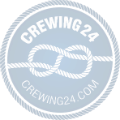
OCTOBER 10, 2013 — Costa Crociere S.p.A. has awarded Dockwise, a wholly-owned subsidiary of Royal Boskalis Westminster, the contract to load and transport the Costa Concordia wreck from Isola del Giglio, where the cruise ship ran aground and tipped over in January 2012, killing 32 of the 4,200 people on board.
The wreck will be removed using the Dockwise Vanguard, the world's largest semisubmersible heavy lift vessel.
Since the successful parbuckling of the Concordia wreck, and in anticipation of the pending refloat in 2014, Dockwise and Costa have been in discussion to seek a safe solution to remove the Concordia wreck from Isola del Giglio in Italy.
"As we’ve always stated since the beginning of project, Costa’s goal is to remove the Concordia wreck from Giglio in a safe and swift way and to do this we have always taken into consideration all the possible alternatives and state of the art technologies," states Franco Porcellacchia, Concordia Wreck Removal Project coordinator for Costa.
In a unique operation the wreck can be loaded as a whole onto the Dockwise Vanguard and safely transported to a location where it can be scrapped. Costa has yet to make a decision, in agreement with the local authorities, on the final destination. Alternatives under review include scrapping the vessel in Italy.
The Dockwise Vanguard also offers advantages in terms of discharge methods. Once the final port of destination is reached, the Dockwise Vanguard there are two possible discharge options: float off, which means that the wreck would be put back into the sea water in floating conditions, or skid off, that is transferring the Concordia from the Vanguard directly onto the pier or an adjacent quayside.
As part of the contract, certain modifications will be made to the Dockwise Vanguard to accommodate the loading of the Concordia in her current state. The operation is planned to take place around mid-2014 and contract value of the work scope as described amounts to approximately $30 million.
Click here to download a high resolution version of the artists impression of the Concordia on board the Dockwise Vanguard.
The Dockwise Vanguard is the world's largest semi-submersible ship uniquely positioned to lift and transport extremely heavy cargoes in a dry and safe manner.
The ship was initially designed to transport offshore oil and gas structures, but can also carry other vessels and act as an offshore dry dock facility.
The Dockwise Vanguard has an open and flat stern and bow-less deck measuring 275 meters by 70 meters allowing the vessel to transport cargo longer and wider than the deck dimensions. When the ballast tanks are flooded, the ship deck submerges below the surface, allowing her to handle deep draft cargoes.
Once the Dockwise Vanguard is semi-submersed, the floating Concordia will be brought in position above the deck and as the Vanguard's ballast tanks are emptied, the entire ship (now carrying the Concordia) will be to a draft allowing her to transport the cargo in a safe and swift manner.
Another Boskalis subsidiary, SMIT Salvage, also provided emergency response services in the first months following the Concordia accident. SMIT Salvage, together with its local partner Tito Neri, successfully removed the bunker fuel from the ship and acted as caretaker from mid-January through to mid-March in 2012.
Boskalis views this project as strategically important, demonstrating the opportunities for combining maritime services and assets across the breadth of the company. Furthermore, the use of the Dockwise Vanguard for this extreme salvage operation shows the versatility of the vessel. The recently announced transportation of a FPSO, a recent successful dry docking operation and now this salvage transport contract award demonstrate the versatility of the vessel.
Meantime, activity at the site continues nonstop: about 500 salvage operators are working round the clock in shifts, 24/7.
Currently technicians are carrying out surveys on the recently emerged starboard side of the wreck to assess damage before eventually proceeding with the needed structural repairs. It will be then possible to position the last 4 sponsons on the left side and the additional 15 on the starboard side to reach the total of 30 that will be needed for the refloating phase.
![[ad-side]](http://www.crewing24.com/ad_images/86_banner.png)
![[ad-side]](http://www.crewing24.com/ad_images/88_banner.jpg)
![[ad-side]](http://www.crewing24.com/ad_images/100_banner.jpg)
![[ad-side]](http://www.crewing24.com/ad_images/105_banner.jpg)
![[ad-side]](http://www.crewing24.com/ad_images/89_banner.png)
![[ad-side]](http://www.crewing24.com/ad_images/107_banner.jpg)
![[ad-side]](http://www.crewing24.com/ad_images/85_banner.jpg)
![[ad-side]](http://www.crewing24.com/ad_images/106_banner.jpg)
![[ad-side]](http://www.crewing24.com/ad_images/82_banner.jpg)